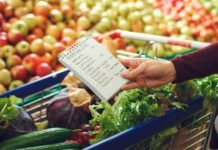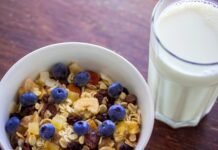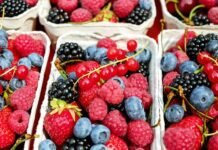When you’re vegan and follow a plant-based diet, there are numerous health benefits. For example, you may have a reduced risk of certain types of cancers, such as colon cancer.
A lot of vegans find they have more energy when they eat plant-based, and you may have the peace of mind of knowing that you eat in a way that reflects your values.
You do have to be mindful of the nutrients you’re getting from a plant-based diet since you aren’t eating meat, fish, or poultry.
Two big areas to think about are how much protein you’re getting as a vegan and your iron intake.
The following are some foods that have either high protein or high iron that you can include in your diet.
Lentils
Lentils are a good addition to any diet because they have not only protein but also iron and fiber. A cup of cooked lentils has nearly 7 milligrams of iron and almost 18 grams of protein.
Lentils also have magnesium, potassium, vitamins, and zinc.
Some research indicates that if you eat lentils regularly, it can reduce your risk of obesity, cancer, heart disease, and diabetes.
Lentils work well in salads, curries, soups, and stews.
Tofu
Tofu is made from the milk of soybeans, and it has protein and iron as well as calcium. A half-cup of tofu has around 10 grams of protein and 6.65 milligrams of iron.
Soy products may be helpful to reduce the risk of heart disease and breast cancer.
Tofu comes in different forms, so it offers versatility as far as how you use it. It can be used in casseroles as a substitute for meat and to make deserts.
Other Beans and Peas
Many other types of beans and peas pack the double punch of having protein and iron.
For example, white beans, red beans, and navy beans all have iron, as do chickpeas and black-eyed peas. These beans and peas tend to be good sources of fiber, folate, potassium, and manganese too.
Studies have found links between diets high in beans and peas and reduced blood pressure and blood sugar, as well as less belly fat.
Nuts, Seeds, and Nut Butters
Nuts like almonds, cashews, peanuts, and walnuts are all full of protein of and certain seeds like sunflower and sesame are too. Nut butter is high in protein. For example, two tablespoons of peanut butter have around eight grams of protein.
Dark Chocolate
If you want a sweet treat, dark chocolate is a good option because three ounces has around seven milligrams of iron. Cocoa in dark chocolate is also a great source of flavonoid antioxidants that protect the heart and may boost your mood and cognitive function.
Spinach
Spinach is a lower calorie but nutritionally rich food that’s a valuable part of many vegan diets. Spinach has a lot of fiber, antioxidants, vitamins, and minerals. One cup offers more than six milligrams of iron.
You have a lot of flexibility in how you use spinach too. You can use raw spinach in salads and smoothies. You can steam or sauté spinach or add it to other recipes like soups and stir-fry.
Blackstrap Molasses
Blackstrap molasses is an interesting food, particularly for vegans. It is high in sugar, so you don’t want to include too much of it in your diet, but it has nutrients like vitamin B6 and magnesium. Blackstrap molasses also has around 3.6 milligrams of iron per tablespoon.
How Much Iron Do You Need?
Finally, when you’re a vegan, you don’t have to go overboard trying to get enough iron. You only need a certain amount.
If you’re a man over the age of 18, you need around 8.7 milligrams a day, and for women under the age of 50, you need 14.8 milligrams. If you’re a woman over the age of 50, you need 8.7 milligrams.
A lot of people also overestimate how much protein they really need. If you eat too much protein, it’s stored as fat or used for energy. Too much protein can also increase your risk of heart disease and put stress on the kidneys.
You should aim to get about 10% to 35% of your total calories from protein. If you followed a 2,000 calorie diet, that means you need around 200 to 700 calories a day from protein sources.
As you age, you might increase that a bit because you start losing muscle mass the older you get.
If you exercise regularly, you might also want to have more protein in your diet.


























